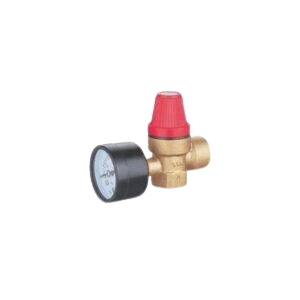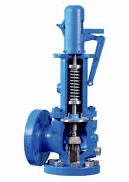When it comes to protecting pressurized systems from dangerous overpressure, valves play a critical role in ensuring safety and proper operation. Two common types of valves designed for pressure protection are relief valves and safety valves. Although these terms sometimes get used interchangeably, they serve distinct functions and operate differently. Choosing the right valve for your system can prevent costly damage, equipment failure, or even accidents. Understanding the fundamental differences between relief valves and safety valves helps engineers, technicians, and operators make informed decisions based on the type of fluid, operating conditions, and safety requirements.
In this guide, we will explore the key differences in purpose, operation, fluid compatibility and design features of relief valves and safety valves. We will also explain the scenarios where each valve is the best fit, helping you select the proper valve for your application.
Purpose and Application
Relief valves and safety valves both act as protective devices but their roles vary significantly.
Safety valves focus primarily on protecting people, equipment and the environment from sudden and potentially dangerous pressure spikes. They act quickly to release pressure in emergency situations. For example, if a boiler’s internal pressure rapidly rises above a safe threshold, the safety valve opens immediately to vent steam and avoid a catastrophic explosion. These valves typically appear in systems containing gases or steam where rapid pressure buildup can threaten safety.

On the other hand, relief valves aim to protect system components by controlling pressure within safe limits in a more controlled manner. They prevent damage by gradually releasing excess pressure, avoiding sudden shocks to the system. Relief valves often appear in liquid systems like hydraulic circuits or water pipelines where slow and steady pressure adjustments are more suitable than abrupt releases. They maintain balance and protect pumps, pipes and seals from overpressure damage.
In summary, safety valves respond instantly to dangerous pressure surges, while relief valves provide continuous, controlled pressure regulation to protect machinery and piping.
Operation Mechanism
The way these valves open and close highlights another major difference.
Safety valves operate like an emergency release. They stay fully closed during normal operation, holding back pressure. Once pressure exceeds the set limit, the valve opens suddenly and completely, allowing fluid to escape rapidly and quickly reduce pressure. This full, instant opening stops the pressure from rising any further and prevents accidents. After pressure drops to a safe level, the valve automatically closes to restore system integrity. This “on/off” action ensures immediate protection when needed.
Conversely, relief valves open progressively as pressure rises beyond the setpoint. Instead of an all-or-nothing response, they allow a controlled amount of fluid to escape. This gradual opening helps avoid sudden pressure shocks and lets the system maintain smooth operation. Once pressure falls below the set limit, the relief valve closes slowly to prevent oscillations or chatter. Because of this fine-tuned control, relief valves function more like pressure regulators than emergency release valves.
Type of Fluid Handled
Safety valves and relief valves also differ in the kinds of fluids they manage.
Safety valves mainly deal with compressible fluids, such as steam, air or gas. These fluids can expand quickly, causing sudden pressure surges. Safety valves quickly vent these gases to avoid explosions or equipment damage.
In contrast, relief valves usually handle incompressible fluids like water, oil or hydraulic fluids. Since liquids do not compress, pressure builds more steadily. Relief valves release these liquids in a controlled manner to maintain system pressure within safe limits and protect pumps, seals and other equipment.
Set Pressure and Blowdown
Setting the right pressure at which the valve opens is crucial.
Safety valves are calibrated to open at a precise pressure limit and have a blowdown feature. Blowdown means there is a small gap between the pressure that opens the valve and the pressure at which the valve reseats or closes. This gap prevents the valve from rapidly opening and closing repeatedly (known as chattering), which can cause wear and system instability. The blowdown ensures the valve stays open long enough to release excess pressure effectively.
Relief valves have less stringent blowdown requirements. They open gradually, and as pressure drops, they close smoothly without sudden movements. This smooth closing helps maintain steady pressure control and reduces wear on the valve and system components.
Design and Regulatory Standards
Safety valves often fall under strict regulatory codes because they protect critical and potentially dangerous systems like boilers and pressure vessels. Organizations such as the American Society of Mechanical Engineers (ASME) provide detailed standards to ensure safety valves perform reliably under emergency conditions.
Relief valves also have industry standards but usually apply to different systems, such as hydraulic or chemical processing equipment. These standards focus on performance, reliability and compatibility with the fluids involved.
Conclusion
Both relief valves and safety valves serve essential roles in managing pressure safely in mechanical systems. The key differences lie in their purpose, operation and fluid compatibility:
- Use safety valves when you need fast, full release of compressible gases or steam during dangerous overpressure events.
- Choose relief valves for gradual, controlled pressure regulation in liquid systems to protect equipment and maintain smooth operation.
Understanding these differences ensures you select the right valve, avoid costly failures and keep your systems safe and efficient.


